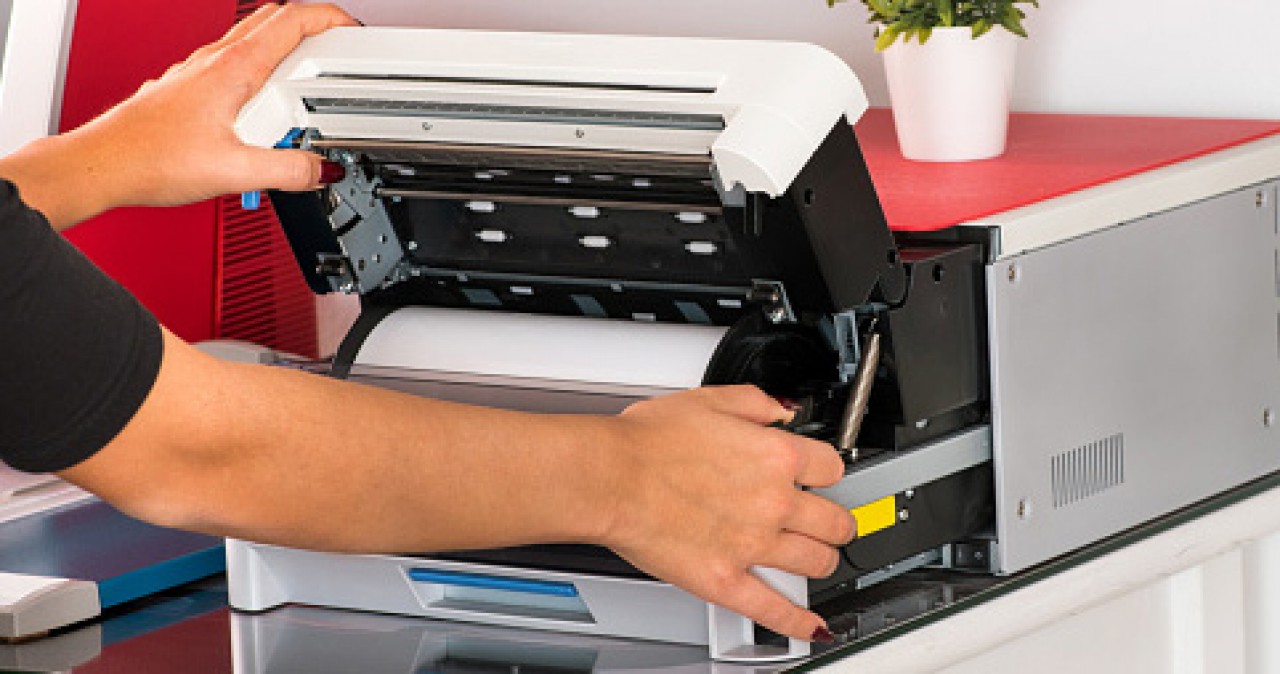The Physics of Sublimation

What makes sublimation ink different from other inks?
Sublimation is the process in which a solid can transform directly to a gas without going through a liquid phase first (think how dry ice never melts but instead turns straight into a gas). Just like dry ice, the ink pigments in sublimation dye are turned into a gas, which then penetrate the surface of the material being printed. Sublimation takes place due to heat, pressure, or both.
Sublimation Ink is comprised of two basic elements: a colorant and a liquid. The colorant is solid pigment and is suspended by a liquid. Unlike an inkjet cartridge that uses color pigment dissolved in a liquid, sublimation inks has tiny suspended particles that allow for more vibrant colors. However colors may seem dull at first because the full spectrum isn’t obtained until after pressing. Color profiles are critical in reaching the inks full capability so be sure to use the settings administered by tech support.
Why should I use sublimation paper when I can just use copy paper?
Paper choice is essential because different papers handle the ink in differing ways. Unlike copy paper, which can absorb ink and cause images to blur, sublimation transfer paper allows for the maximum ink release and a much crisper image. This is because it has a special coating that helps control the sublimation ink without absorbing it.
After choosing the correct paper, otherwise called a transfer medium, a dye-sublimation printer places those solid ink pigments onto said transfer medium. With the ink pigments on the carrier paper, they can be effectively released into the substrate by way of heat press.
Does a certain sublimation paper transfer better to dark fabrics and why do some colors appear more vibrant on one substrate than they do another?

Sublimation paper is only a means for carrying ink and has no effect on how the ink will function. Imagine laying a piece of colored glass on a white tablecloth and then a black one. You will still see the darkness of the black tablecloth behind the glass no matter what color the glass is. An example of ink being overlain atop a gradient of white to black is represented by the image to the right.
Why do cotton blends not accept ink as well?
Sublimation dye is an oil loving molecule and can easily be bonded with polyester because of the way poly opens to accept ink. Natural materials such as cotton and wood will not hold the ink and will instead burn as you attempt to sublimate them. This question bring us to our next topic in the printing process.
After printing to your paper, the next key step involves a heat press. While doing this, make sure that your paper is adhered to the substrate securely to prevent the paper from shifting and ghosting your image. The press brings the printed transfer into contact with the substrate that is to receive the image and the heat causes a physical change within the ink. Under the heat and pressure of the heat press, the solid dye on the printed paper is converted to a gas which penetrates the openings of the heated poly-coating and bonds with it. As soon as the heat and pressure are released, the dyes start to solidify back into pigments and the openings close. This bonding process creates a vibrant, permanent image that won’t smudge. With that said, poly substrates accept ink differently for various reasons (such as cotton). The rigidity of the material, poly coating, time pressed, temperature chosen, and pressure used are all key components in this variance.
Always be sure to test color settings, instructions, and imprinting, as this is the most important step.
Why choose Condé for Sublimation?
Condé is tirelessly testing products and pioneering improvements to the sublimation process. Condé is an amazing company with a dedicated sales staff, who genuinely want success for our sublimation family and valued customers. We choose quality products and believe in transparency with regard to. our clients. In addition, each of our sublimation blanks have instructions and templates to make printing as easy as possible. Please utilize our massive video library on CondeTV, regularly tune in to our Facebook/YouTube lives, and visit us at trade shows to learn about our latest products. Whether you are just looking for inspiration or needing help with print services, we are here to streamline your processes and assist you on your journey towards success.
